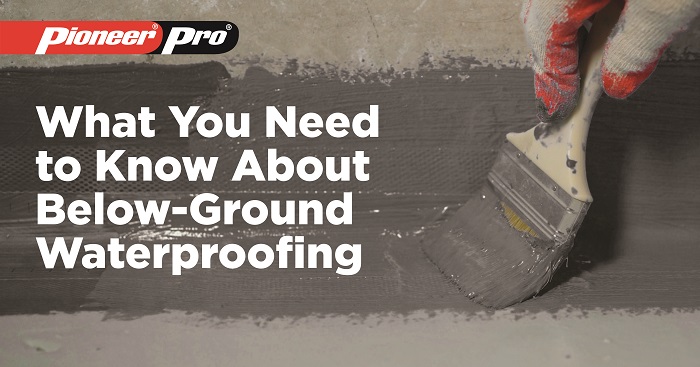
While it’s quite uncommon to add basements and underground garages in many Philippine homes, these spaces are often incorporated in commercial and residential buildings. Towering structures and a few modern homes have areas below ground level, which are often used for parking, storage, and tunnels for communication channels.
Making sure these below-ground areas are sturdy and waterproofed properly is important to further ensure the structural integrity of the project you are working on. As explained by experts, “water seepage through the foundation can damage the joints and edges where flooring and walls meet.”
What is below-ground waterproofing?
Below-ground waterproofing is a construction process that involves “applying coatings and membranes to the walls of a building’s foundation below ground level as part of the building envelope.” Just like any other construction step, it needs to be done to “prevent water infiltration and resist harmful contaminants from entering the structure.”
While this is definitely a must-do, professionals underline its importance, especially if the project is built on a site with “underlying contamination.” Water can penetrate through concrete imperfections which then causes cracks and costly damages when left unaddressed.
What happens when below-ground waterproofing was done incorrectly?
Areas situated below a structure carry a heavy load and are subject to wear-and-tear. Skipping below-ground waterproofing or doing it haphazardly can affect the durability of a structure. Some signs of water damage you need to watch out for include:
– Peeling paint
– Rust
– Cracks
– Mold and mildew
– Damp patches
– Dribbling water
These need to be addressed immediately to avoid damaging foundation of your project. Experts say that postponing repairs can lead to a flooded house or building.
What are the three below-ground waterproofing processes you can consider?
1. Positive-side waterproofing – Done on the exterior of all buildings and requires access to the outside face of a building and done after walls are built.
2. Negative-side waterproofing – Considered when positive-side waterproofing isn’t possible and involves applying membranes inside the building. Professionals say this process isn’t reliable as the surface you’re applying on may move or crack over time.
3. Blindside waterproofing – Involves applying waterproofing on the underside of structural slabs and often considered when there are limitations on where coating can be applied.
To determine which waterproofing product you can use, you also need to work with fellow professionals to triple check the project’s depth to groundwater, drainage, insulation, structural integrity, building codes, penetration, expansion joins, and presence of contamination, to name a few.
Upon review of these factors, make sure you choose a waterproofing product that’s guaranteed to give you peace of mind. Pioneer Pro Water-Tite 101 All Purpose is a one-component cement-based crystalline capillary, water-repellent, micro-mortar waterproofing system. It can be applied on both new and old structures which means it can be part of your construction essentials whether you’re building from the ground up or renovating an existing building.

Pioneer Pro Water-Tite 101 All Purpose can also be applied on the water-retaining side or on the negative side, making it an ideal choice for your projects. Versatile, non-flammable, and economical, it can be used to waterproof underground garages, foundation slabs inside, basement walls, irrigation of tunnels, supporting walls and columns, and even water tanks.
Protect masonry and concrete structures with Pioneer Pro Water-Tite 101 All Purpose and add value to your projects. Exceed the expectations of your clients and deliver another safe and resilient structure.
Visit the Pioneer Pro Solution Sets page to learn more about Pioneer Pro Water-Tite 101 All Purpose and how it can be an important part of your projects.
